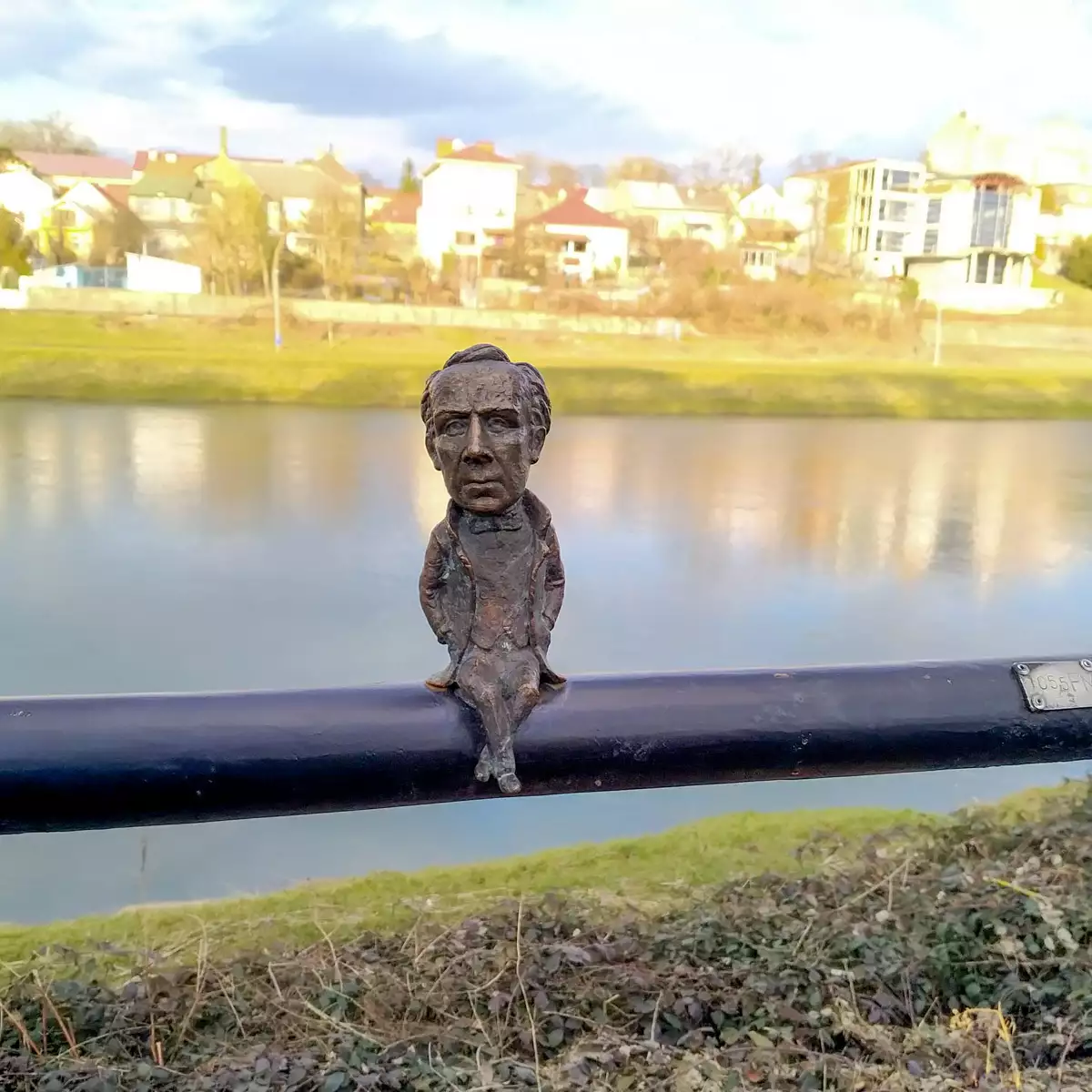🕒 Date of last update of the article: 26.04.2024 at 5:57 p.m | 🖋 Author: Viktor Shatrov
Надсилайте актуальну інформацію та отримуйте більше цільових клієнтів. Ми розмістимо ваш об’єкт у нашому каталозі та покажемо поруч із локаціями, а також у загальному каталозі, це безкоштовно!
🕒 Date of last update of the article: 26.04.2024 at 5:57 p.m | 🖋 Author: Viktor Shatrov
This mini-sculpture was unveiled on 25 September 2015. The installation was timed to coincide with the 70th anniversary of the death of the famous Hungarian composer Beila Bartok. It was placed on the railing of Pravoslavna embankment opposite the Hungarian consulate (GPS: 48.620346, 22.299368).
The author of this monument, Mykhailo Kolodko, said at the opening of his masterpiece that even the weather was in favour of the appearance of another tourist attraction in Uzhhorod. It was the rain that inspired the outstanding composer.

Content
| 🗺 Location | N48°37′14″ E22°17′59″ |
| 🗽 Opening date | 09/25/2015 |
| 🧑 Sculptor | Mykhailo Kolodko |
| 🧭 Distance from the center of Uzhhorod | Near |
| 🚙 Road for | Car, on foot |
| 🏕 Stop with a tent | No |
| 🏡 Housing nearby | Uzhhorod |
| ☕ Cafes and shops | Uzhhorod |
| 🌍 Address | Pravoslavna embankment, Uzhhorod, Transcarpathian region |
| 🕒 Possibility of visiting | 24/7 |
Between 1888 and 1892, Beila Bartok lived in Sevliush (now Vynohradiv) in Transcarpathia. It was in Vynohradiv on 1 March 1892 that he gave his first public concert, where he performed his own composition for the first time. The success of this concert had important consequences for the young Beila. The headmaster of the local school gave Bartok’s mother a year’s leave to go to Bratyslava. In Bratyslava, Bartok took piano and harmony lessons from Laszlo Erkel, the son of Ferenc Erkel.
In January 1899, Bartok was auditioned in Budapest by Professor Istvan Toman, a student of Ferenc Liszt. With his assistance, in the autumn of the same year Bartók entered the capital’s music academy without exams. There he immediately established himself as a talented young musician.
In 1907, he became a professor of piano at the Budapest Academy of Music. He combined his teaching activities with concert performances and the study of folklore. He actively researched Ukrainian musical folklore. Bartók collected about 80 Ukrainian folk songs. In the rain and snow, he travelled to the most remote mountain villages of Transcarpathia with his phonograph to preserve the pearls of Transcarpathian folk art for posterity. It is with a phonograph in his hands that he is depicted on a mini-sculpture in Uzhhorod.
The composer Beila Bartok was recognised only after his death.
An interesting legend associated with this mini-sculpture is described by Nadiya Popadyuk in her book Uzhhorod – the World Capital of Mini-Sculptures. According to legend, after graduating from the Liszt Academy of Music in Budapest, it was Beila Bartok who first performed his works in Uzhhorod on the ancient and versatile organ that was installed in the Great Synagogue immediately after its opening in 1904. In 1939, this 40-tonne organ mysteriously disappeared.
Before emigrating to the United States, Bartok returned to Uzhhorod in 1940 to say goodbye to his beloved city, and as a memento, he fixed his mini-sculpture on the railing of the Uzh River embankment, which turned its back on the synagogue as a sign of resentment for the disappearance of the unique instrument.
In the United States, Beila Bartok did not receive recognition and died in poverty.
| 🔰 Start | From the Croton knot mini-sculpture |
| 🚶 Walking distance | 270 m |
| 🕐 Approximate time | 4 minutes |
| ⬇ Descent / ⬆ Ascent | Mostly without ups and downs |
Author of the article: Viktor Shatrov
Number of articles: 1100+
Knowledge of languages:: Ukrainian, English
Favourite quote: “Travelling – the only thing that makes you richer“
He was born and lived all his life in Uzhhorod. He graduated with a gold medal from Uzhhorod School No. 1 named after Taras Shevchenko (now Uzhhorod Lyceum named after Taras Shevchenko). He studied at the History Department of UzhNU, graduating with honours in 2009. He worked as a senior researcher at the Transcarpathian Museum of Folk Architecture and Life, a lecturer at the East European Slavic University.